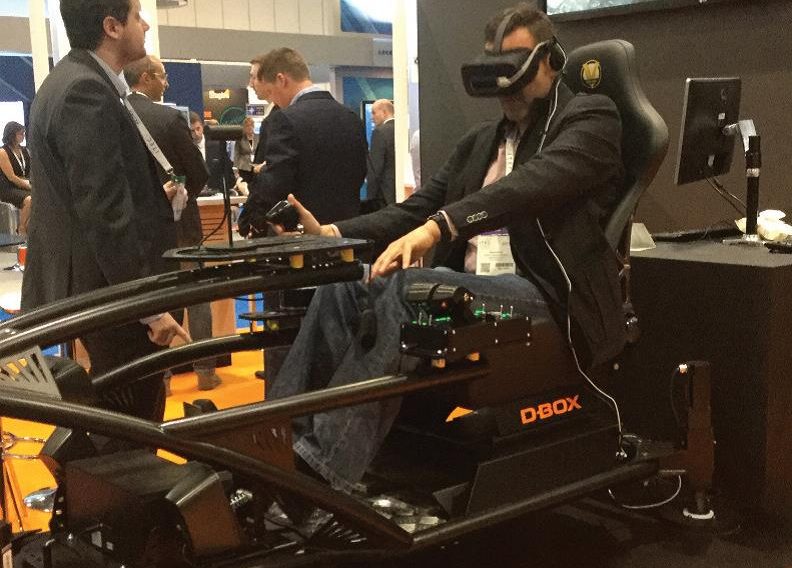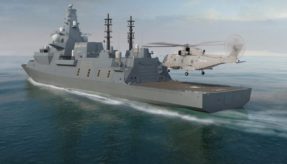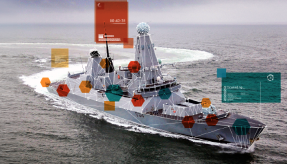
ITEC, an annual forum for representatives from the military, industry and academia to connect and share knowledge with the international training. education and simulation sectors, took place in London recently. MOD DCB features writer Paul Elliott was there to see what the future of training and simulation looks like for defence.
Defence training is by necessity innovative. Military training requirements are always evolving and the solutions provided by the defence industry are among the most technologically advanced of their kind.
For the Ministry of Defence, simulations and synthetic environments in their myriad forms are becoming ever more important. The military requires as realistic a training experience for its recruits as possible and industry is helping to deliver this. Indeed, there is a vibrant and inventive supply chain producing solutions of all types to meet the training needs of defence organisations across the globe. Each year, representatives from the military, industry and academia meet at the ITEC forum with the specific aim of connecting and sharing knowledge with the international training. education and simulation sectors in pursuit of this ambition.

ITEC 2016, held at London ExCeL on 17-19 May, had some fascinating technology on display
that can help defence organisations offer world-class training experiences.
ITEC 2016, held at London ExCeL on 17-19 May, had some fascinating technology on display that can help defence organisations offer world-class training experiences. What most impressed about the solutions offered at the event was their immersive qualities. In many instances attendees exploring these synthetic environments reported the sensation of being instantly removed from the event setting and placed slap-bang in the middle of a battlefield, or in the cockpit of a fighter jet.
Solutions available to the MOD include walk-in rooms that transport the user to a moving landscape. These rooms wrap around the recruit, offering a training landscape generated by sharp images beamed from near-hidden high-end projectors. The sound is realistic too – you can hear the battle rage behind you, as well as ahead.
Among the most extraordinary solutions on the market are those utilising virtual reality. VR is becoming a valued and useful training solution and the MOD is very interested in harnessing its capabilities. More and more VR products are emerging and it’s hard not to be impressed by the quality of the immersive experience offered by the technology.
What’s notable about virtual reality is the clear cross-over with the computer gaming industry. Many VR solutions have the look and feel of computer games, and it is believed people who play computer games will settle quickly using VR as a learning environment. Many such products exploit the Oculus Rift headset, originally developed for the gaming industry, which offers an accessible and cheap method for exploring the potential of VR. With value for money another key advantage of using this technology, the VR strand in defence training and simulation is one that is surely set to grow.

Simulators are still a popular technology offering great training experiences. Flight simulators in particular offer very realistic training scenarios as the equipment used is identical to that found in the particular aircraft that individuals are training to fly. Simulation is a tried and tested method of training personnel and one that will continue to have value in the future.
With the cyber threat currently high on the agenda across the defence and security sectors, cyber wargaming is a new strand of training emerging onto the market. Software can mimic cyber attacks and teach people how to react in real time to counter the cyber threat. It is anticipated that in the near future there will be many offerings on the market that can deliver vital training of this kind to both the public and private sectors.
Military simulations are seen as a useful way to develop tactical, strategic and doctrinal solutions. When you try the technology out for yourself it is easy to understand the role it can play in helping personnel develop relevant skills. Where there is demand there is always a solution to be supplied. It is inevitable that a strong and competitive market will emerge to supply these training solutions to the MOD and any other organisation with similar requirements.
At ITEC 2016 a variety of international businesses displayed to a global audience. It was clear that this is not a UK-centric market; it’s a global concern. ITEC promotes itself as the premier international forum for the military simulation, training and education community and the event certainly attracted some of the greatest minds and talents from across the globe in this field. The speakers and exhibitors offered an insightful overview of the industry’s latest innovations and developments. It is a market that is visibly technology-driven and a veritable innovation goldmine.

There was also a strong representation from academia at the event. Academia has a powerful influence on defence products as many of the very best ideas are formed in the lecture halls and seminar rooms of universities and colleges across the land. From here fantastic ideas for how technology can be used to better train people regularly emerge. One example at ITEC 2016 came from Federica Pallavicini from Milan University who discussed her research in using virtual reality to train the human brain to manage stress in complex situations in order to take the right course of action. Andreas Haggman from Royal Holloway, University of London then looked in depth at how to wargame cyber attacks, and the challenges and opportunities doing this presents. It was fascinating stuff.
There were enlightening speakers from within industry and defence as well. MBDi President Nicholas Coppings and Cdr Paul Pine, MTAO Requirements Manager for the Royal Navy, gave in-depth presentations from a business perspective; while Paul Winstanley of the UK Defence Solutions Centre gave an overview of the Innovation Challenges set by UKDSC. The central message was that everyone involved can clearly see the value of the new technologies and solutions being developed to support defence training requirements.
Some of the most exciting technology you will find today is being used in defence training and simulation. Judging by the solutions and the expertise on display at ITEC 2016, it’s a healthy market that will continue to produce outstanding products and services for the military.
cyber threat fighter jet ITEC 2016 MOD Royal Navy simulators software technology UK UKDSC Virtual Reality








